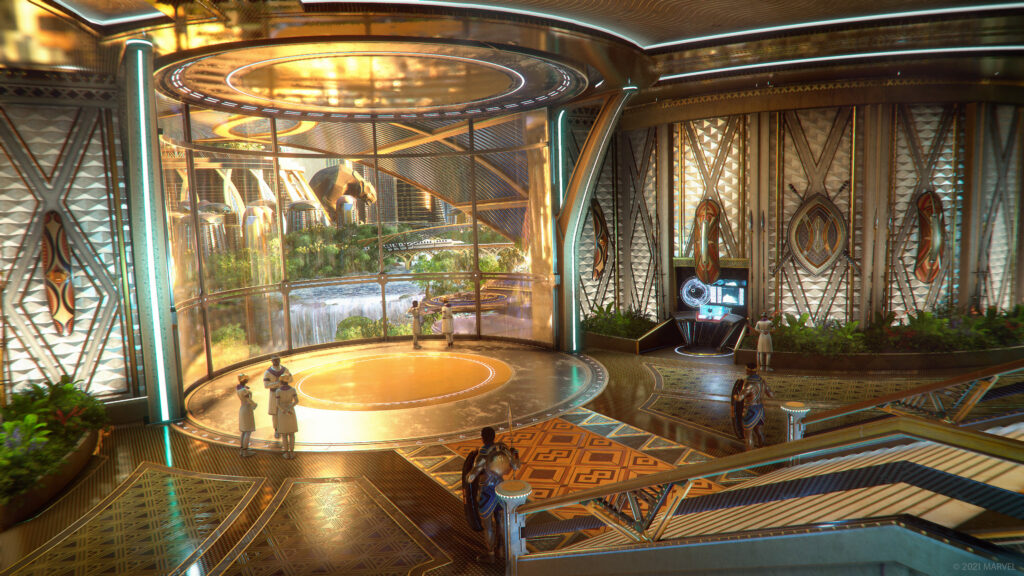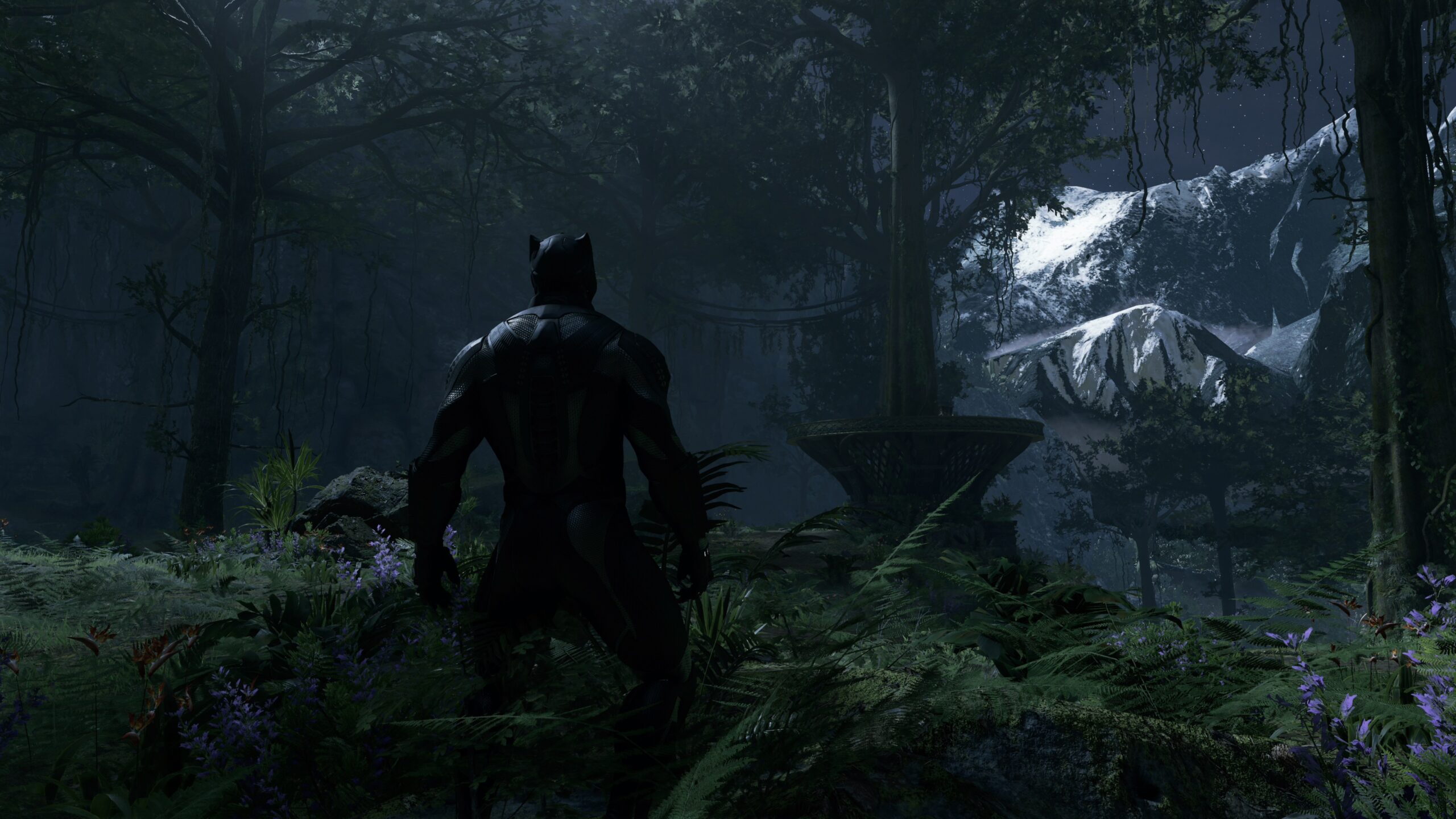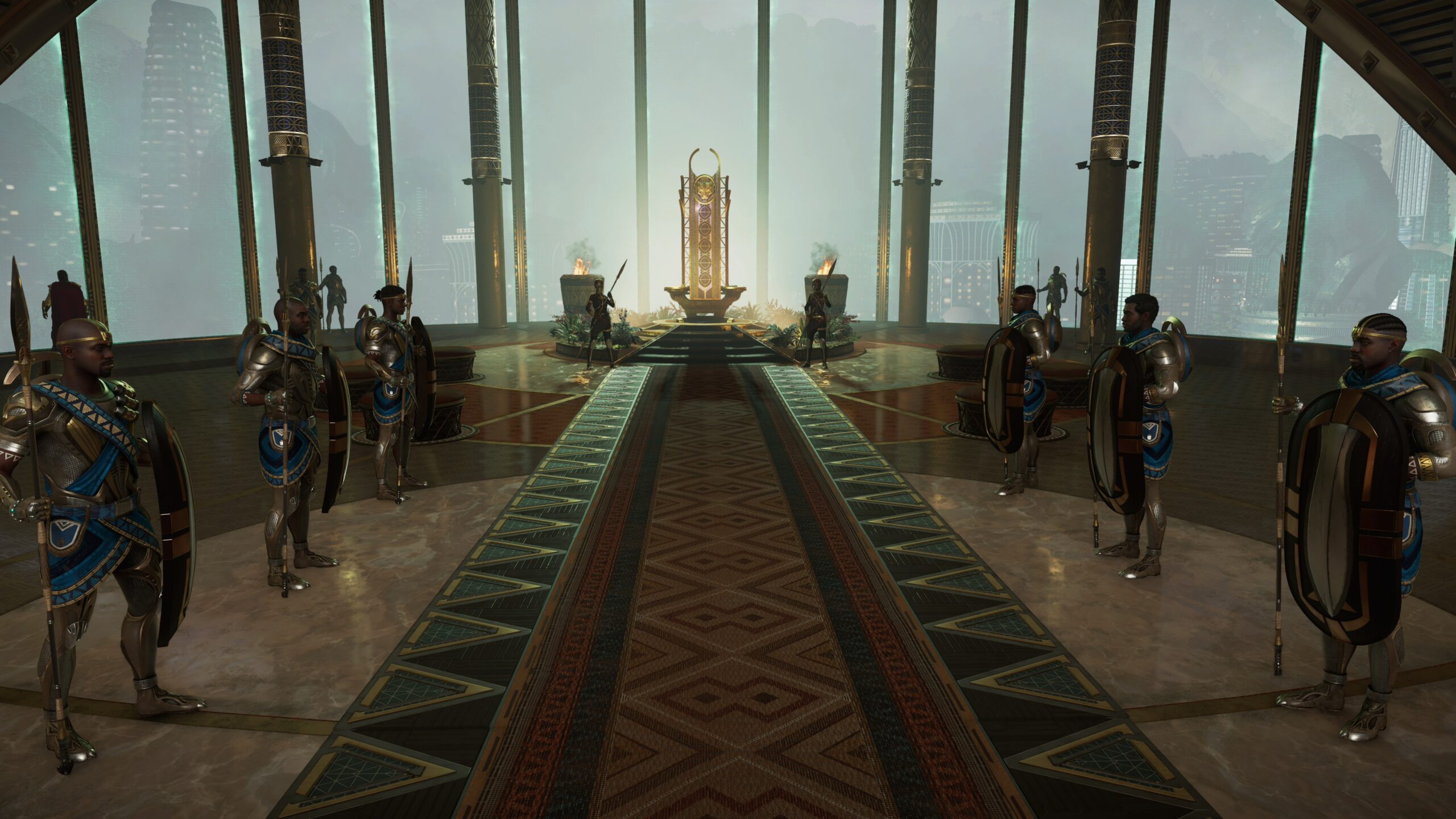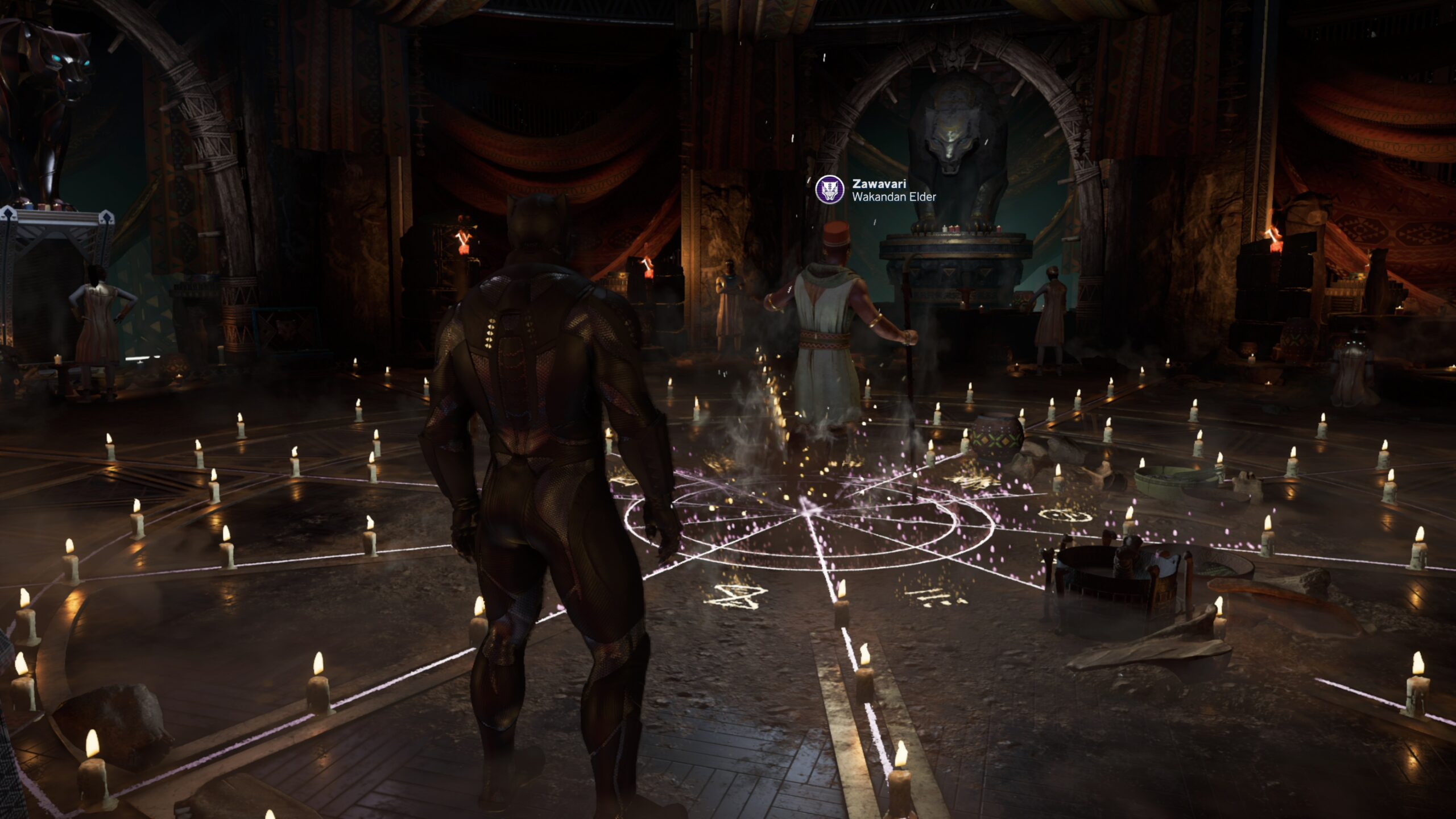Last week, Square Enix and Crystal Dynamics released the first expansion for Marvel’s Avengers titled War for Wakanda. Taking place after the Reassembled campaign that’s boxed in with the base game’s release, Wakanda introduces King T’Challa as the new playable hero: Black Panther. Accessed through the title screen’s Operations menu, Wakanda can be played and re-played after completion, and comes at no additional cost to purchasing the game.
Jumping in, the campaign in Wakanda kicks off with an AIM invasion led by hired goon Ulysses Klaue and his army, in the hopes of stealing the nation’s secrets in utilizing vibranium — a resource their technology. T’Challa pursues Klaue’s men through his county, where we get more information about Wakanda and its place within the Marvel’s Avengers world. Eventually, returning to the capital Birnin Zana, T’Challa reunites with his sister Princess Shuri to formulate a plan on repelling Klaue and AIM alike.
While the campaign takes several hours to complete, the story is breezy, yet effective in telling a self-contained story transpiring in the larger plot of the Avengers combating AIM. T’Challa and Shuri both have different angles on how best to protect Wakanda, and the tension between them helps carry through what would otherwise that, with less care, could easily be a checklist of battlegrounds and objectives or a salvo of unnecessary exposition that many post-release stories fall into. It’s a positive highlight overall. The Wakandan zones are also lush and beautiful, much like the rest of the game’s environments.
Black Panther is fun to play, particularly that his abilities are well suited to moving between ground and aerial positions and feels intrinsic to what the character’s design and attributes should be. Heroic moves are useful to deploy and customize. That’s the same for most heroes, in that their core styles are quite good, and no one feels unviable – sort of. More on that in a moment. New enemy types also appear in this expansion, most commonly spider-like robots. Smaller swarms are more dangerous than they appear, especially if you get surrounded, and larger ones can web heroes and pull them across the battlefield. Klaue’s army use sonic weapons that can disrupt by obscuring the limbs of the screen.
While objectives still run a familiar gambit: defending locations, taking out nodes, defeating waves of enemies, the core mission-style structure is sound. However, a lot of structural design issues persist with the expansion and they are largely due to the encounter design and poor itemization. A lot of this friction comes in the endgame phase, as higher difficulty missions become available.
Melee-focused heroes are at a significant disadvantage when it comes to dealing with mechanics, as most of them are tuned to focus on melee distance — even after making use of your blocking, parrying, and evasion tools. Ranged characters with ranged abilities have an easier time to maneuver through attacks at a distance. A lot of strategies involve quickly applying debuffs to increase damage output, and the risk that melee characters or melee abilities take on feels largely unbalanced.
A looter game needs good loot, but there’s little worth striving for in Avengers. Builds have become largely about stacking gear of one specific parameter, or being able to apply one of six (now eight) status debuffs, but their inherent abilities are just incredibly boring. For a co-op game, it wouldn’t hurt for Avengers to really spice up the active and passive abilities on exotic gear. Without a leaderboard or competitive aspect, I really wonder what there is to lose with a perceived imbalance if it means that gear had interesting traits.
To make matters worse, despite launching an expansion, most of your endgame travails will see you farming the exact, same missions as before — it’s back to Snowy Tundra Vaults and Mega Hives unceremoniously. Even then, with RNG dictating the stat loadout and gear perks, the amount of grinding needed to merely test out a new build is itself a turnoff. If feels as if the item team and the content team exist in bubbles, and no one bothered to ask: “how does this all fit together in to a sensible… or even fun experience.” What also detracts is the amount of bugs I’ve ran into, having to reload checkpoints several times after getting stuck in the terrain or having a target disappear into the map. Yep, that’s still a big problem.
One area of praise I’d like to shoutout is an overhaul of the menus where many disparate menus have been streamlined into a “Character” page where anything character-related can be quickly managed, including an easier way to disassemble gear into components. There are still some improvements that could be made here, but this update significantly improves that experience. This was also my first experience with Avengers on PS5 versus PS4, and the added SSD is a boon to the purgatorial loading times in the Quinjet.
War for Wakanda, at least it’s scenario, is an enjoyable handful of hours. Its story is pretty easy to follow and entertaining, even for the uninitiated, and there are some quality of life improvements that make the micromanaging much smoother. Beyond that, it’s hard to see where the expansion is beyond this being a larger scale update rather than the overhaul it needs. There’s very little that Wakanda shakes up in Avengers, a game that in my opinion has all the components of a good experience, but frustratingly lacks a cohesive design that makes them work well together.
Marvel’s Avengers is now available on PlayStation 5, PlayStation 4, Xbox Series S|X, Xbox One, PC, and Stadia.





Recent Comments